Art World
Preserving the Sistine Chapel Is a Never-Ending Task. See Stunning Behind-the-Scenes Photos of What It Takes
"Preventative conservation" is the key to keeping the ceiling looking fresh.
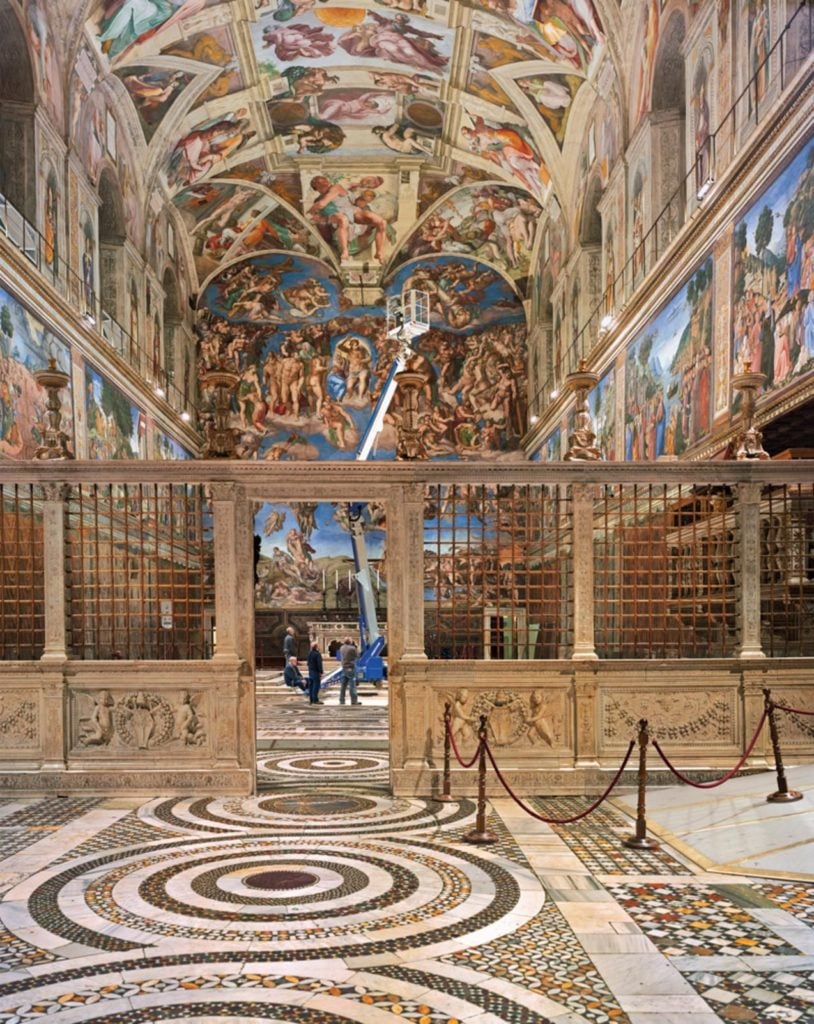
"Preventative conservation" is the key to keeping the ceiling looking fresh.

Sarah Cascone

In the 1980s, the Vatican famously began an extensive restoration of the Sistine Chapel, clearing away centuries of dirt and grime from Michelangelo’s famed frescos. When that project ended in 1994, a new one began: the careful monitoring and so-called “preventative conservation” of the works, which are now seen by close to seven million visitors each year. The name of the game? Constant vigilance.
In a special behind-the-scenes look, the Wall Street Journal Magazine visited the chapel after hours to see how the delicate artworks are carefully monitored to make sure they are not threatened by contaminants brought in by hoards of visitors (more than 1,000 can crowd in at a time) who inadvertently track in dirt, dust, and leave behind traces of hair and skin.
To preserve the ceiling, the Vatican has installed LED lighting that doesn’t emit UV rays and won’t cause the paintings to fade. There is also a special HVAC system, donated in 2014 by the Carrier Corporation, that keeps the temperature constantly between 22 and 24 degrees Celsius (71.6 to 75.2 degrees Fahrenheit). To keep out impurities, four diffusers bring in and take out air. At night, staff members painstakingly dust and vacuum the entire museum. (All dust is analyzed to detect bacteria or fungi.)
“The humidity must never be more than 60 percent,” Vittoria Cimino, the director of the Conservator’s Office at the Vatican Museums, told the WSJ. “The carbon-dioxide level has to be kept lower than 800 parts per million. All these values have to be kept stable. But the number of people in the room makes that complicated. It can be one, or it can be a thousand. The human body produces heat. And it produces carbon dioxide. If we have to, we can completely change the air inside the chapel 60 times a day.”
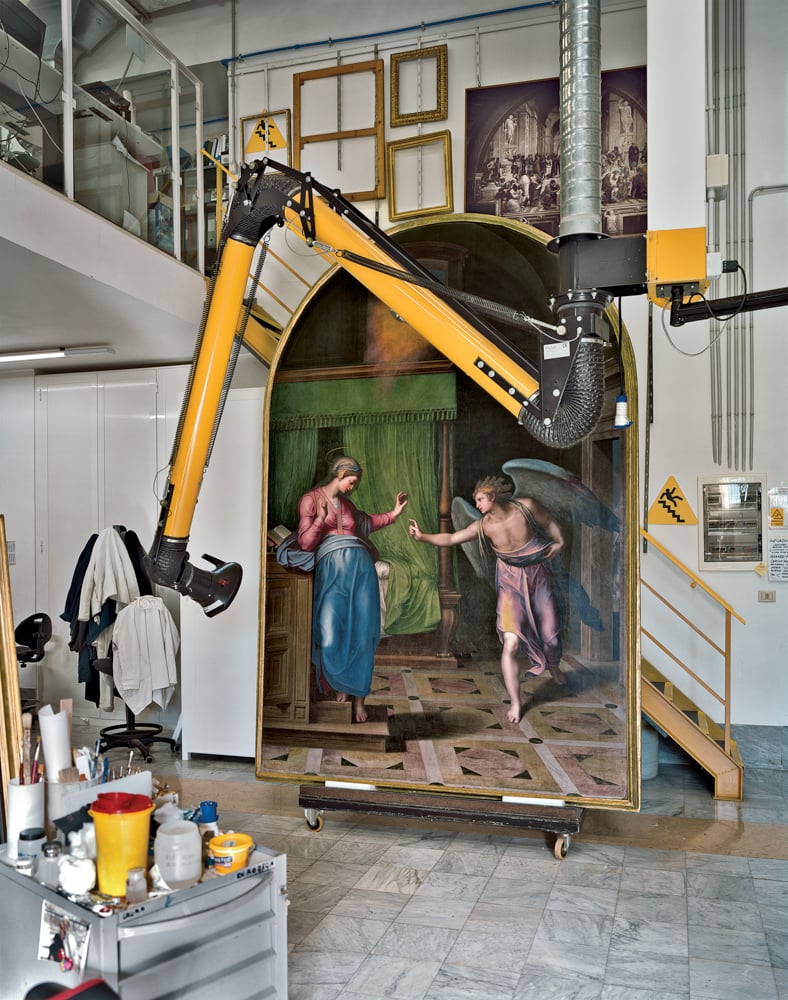
The Annunciation, a 16th-century work by Marcello Venusti, inside the Vatican Museums’ Painting and Wood Materials Restoration Laboratory. Photo by Robert Polidori for WSJ Magazine.
Throughout the day, a Vatican conservation technician is monitoring sensors in the Sistine Chapel that track all of these variables.
But despite the Vatican’s best efforts, thin layers of contamination inevitably develop. Carbon dioxide reacts to the plaster of the frescos. Through the process of condensation and evaporation, bacteria accumulates. The result is an almost imperceptible whitish glaze of soluble salts above the surface of the painting. To prevent the work from being damaged, staff clean the frescos regularly and remove contaminants while they are still soluble, using a crane-like machine nicknamed the Spider—a Multitel SMX 250 self-propelled tracked platform—to access the high-up paintings.
The Sistine Chapel was commissioned in 1473. Michelangelo painted the ceiling between 1508 to 1512, and The Last Judgement from 1536 and 1541. The frescos on the side walls are by artists including Sandro Botticelli and Domenico Ghirlandaio, Michelangelo’s teacher. It’s an incredible amount of art per square inch in a space just 132 feet by 44 feet—and if all goes well, it will be preserved well into posterity.
See more photos below.
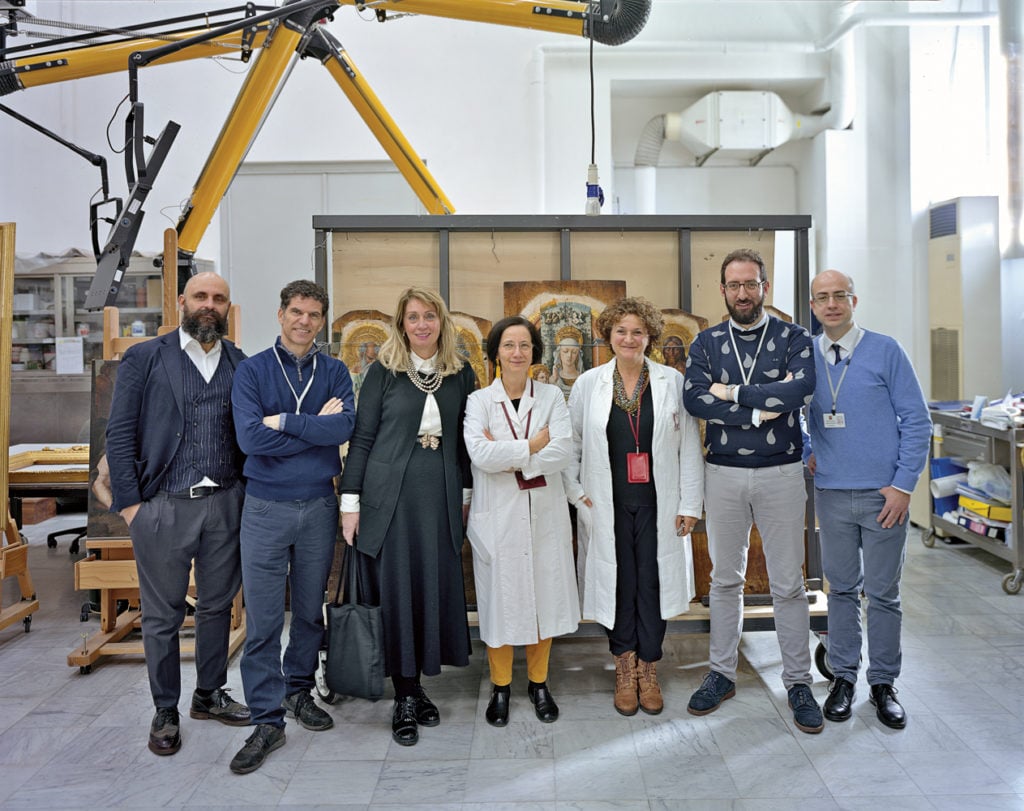
Members of the Vatican Museums’ conservation team, including (from left) Matteo Alessandrini, Alessandro Barbaresi, Vittoria Cimino, Francesca Persegati, Alessandra Zarelli, Matteo Mucciante and Marco Maggi. Photo by Robert Polidori for WSJ Magazine.
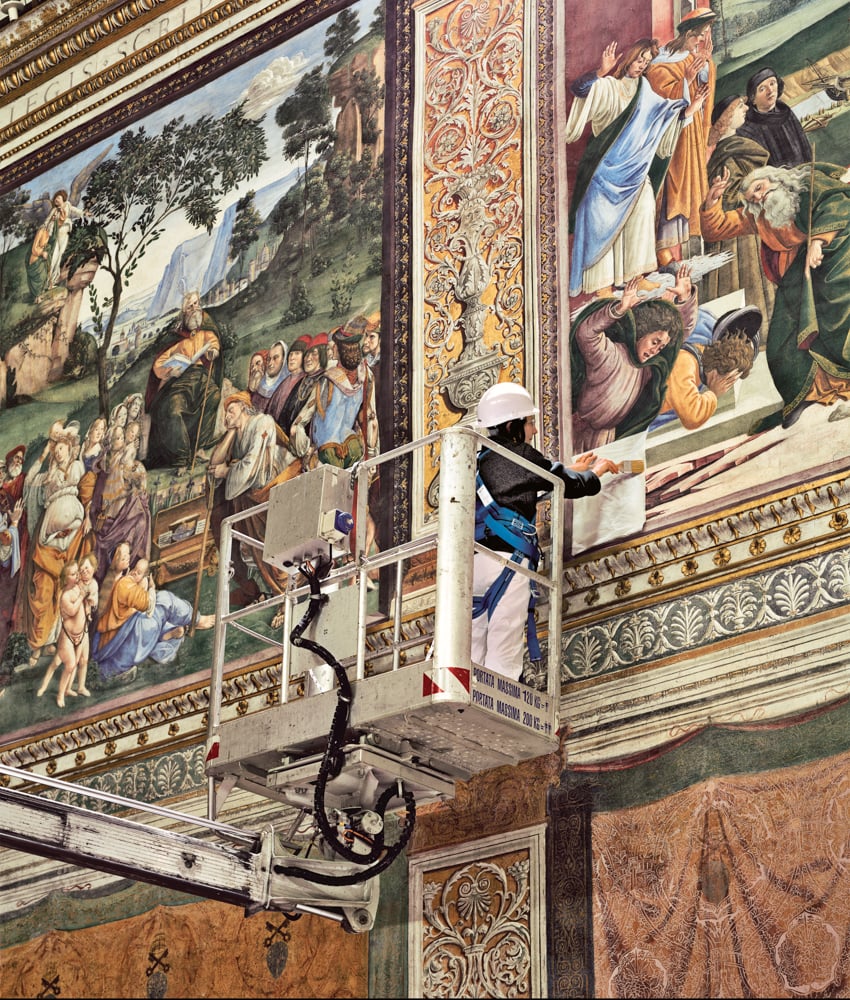
A master conservator demonstrating a technique for removing contaminants from a Botticelli fresco in the Sistine Chapel. Photo by Robert Polidori for WSJ Magazine.
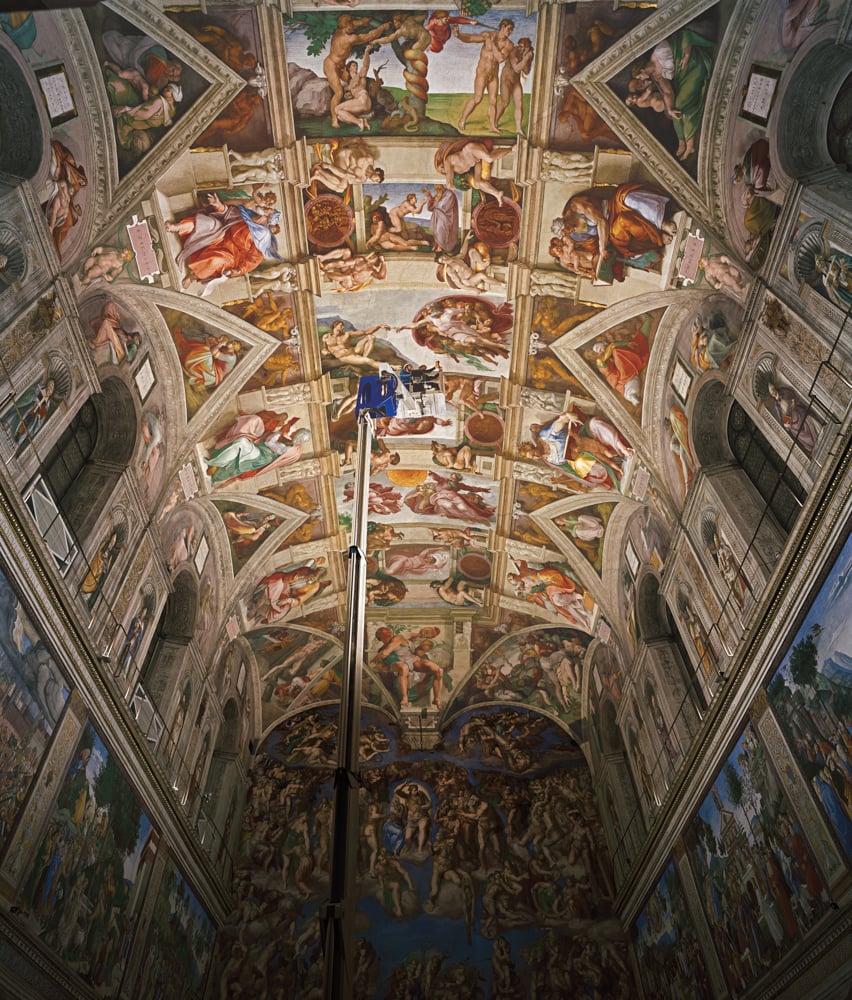
The Spider (the Multitel SMX 250) and the Sistine Chapel’s ceiling. Photo by Robert Polidori for WSJ Magazine.
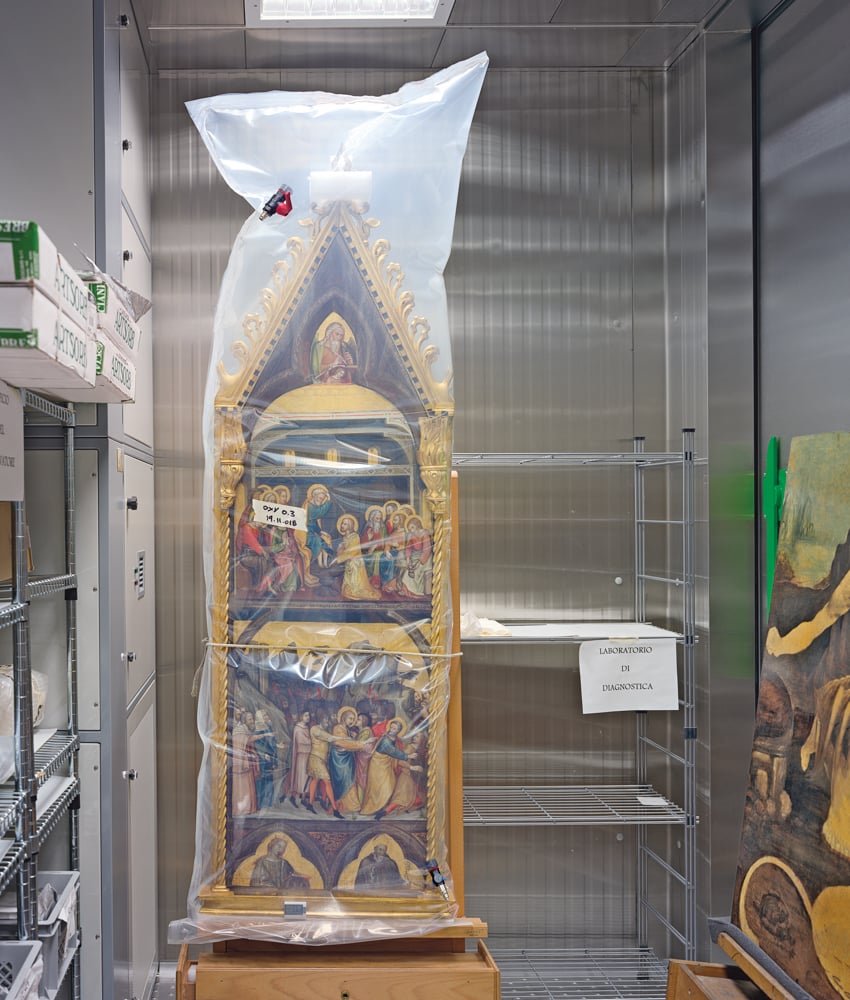
Maestro di Fossa’s Histories of the Passion of Jesus, and part of Leonardo da Vinci’s unfinished Saint Jerome in the Desert at the conservation lab at the Vatican Museums. Photo by Robert Polidori for WSJ Magazine.
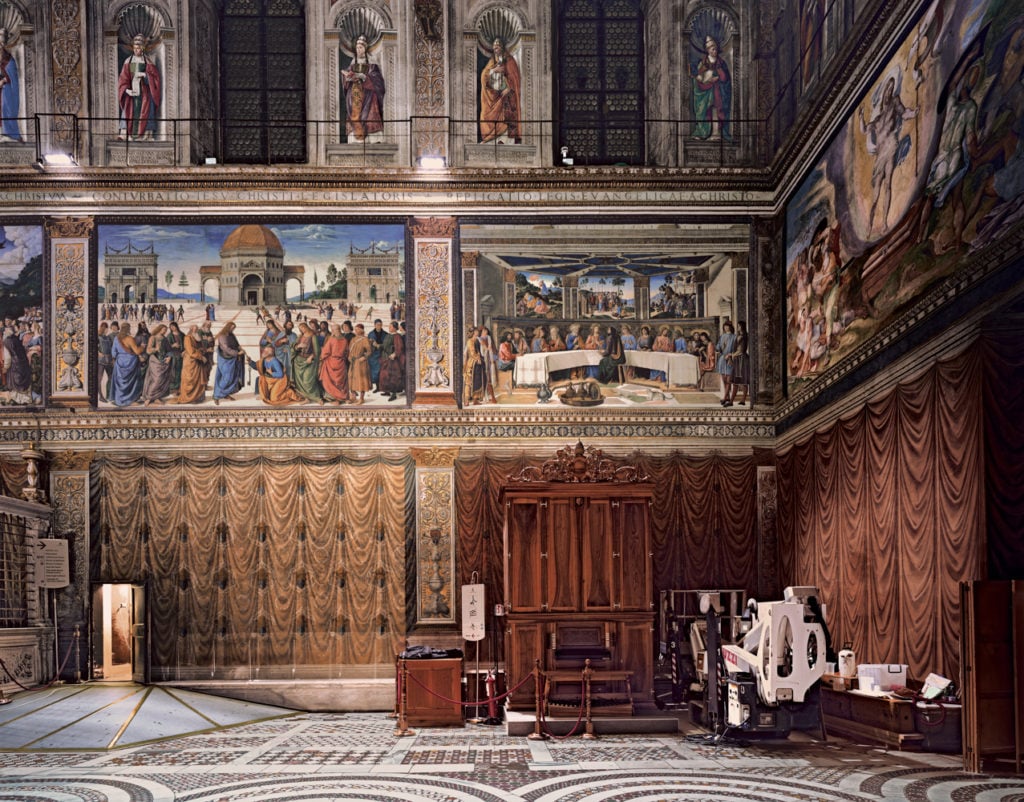
The northern wall of the Sistine Chapel. Photo by Robert Polidori for WSJ Magazine.